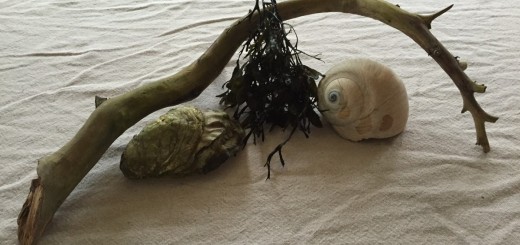Our foraging experiences
Most of the foraging we did requires a shell fishing license, you can purchase one here:
https://fishhunt.dfw.wa.gov/
Additionally there are regulations on harvesting, they are available here:
http://wdfw.wa.gov/fishing/shellfish/statewide_rules.html
And finally before heading out to harvest make sure you check this page for safe practices and to make sure there are no pollution/toxicity closures where you plan to go:
http://wdfw.wa.gov/fishing/shellfish/shellfish_seaweed_rules.html
For our taste of place video as well as our meroir themed dinner we decided to go foraging to try and capture some local flavors. We started with a night trip to Duckabush public tidelands to catch the low tide. On this adventure we collected oysters, clams, a bottle of sea water, and a small amount of what we think is a fucus seaweed. We returned during daylight hours for video footage and discovered rose hips and more seaweed. After this we preceded on to Dosewallips Mud Flats in the hopes of finding crabs, more oysters, eel grass or sea beans. We came during high tide so the eel grass/crabs were inaccessible but we did find loads of sea beans! Our haul was minimal but we learned a lot just getting our feet in the water with foraging.
Here’s some of the things we collected and what we did with them:
Sea beans– They’re a type of succulent that tasted like a shot of fresh pickle juice in the summer when I first tried them at Dosewallips. Winter isn’t so kind to them however. Their plumpness had dissipated and they tasted sour but also like they were rotting. We rinsed them thoroughly and cut them into matchstick size pieces before pickling with some rose hip juice. After a day they still had the same funky decomposing taste so we decided against using them. The more you know~
Fucus sea weed- We rinsed this excessively to make sure all the sand and grit were removed. Then we cut it into single leaves and remove any large tips or stems attached. Some of this was dipped in simple syrup and rolled in sugar before it was put in the oven where it finished becoming candied seaweed. We used this as a garnish for our cocktail but if we were to do this again we’d baked the seaweed to crisp it up a bit before candying it. We also pickled a bit of this and diced it as a topping for the rice.
Oysters- Most of our oysters were provided by the Evergreen shellfish club from the beach at the college but we did find about a dozen medium sized oysters each time we visited Duckabush. Their liquor was added to the rice cooking liquid and the meat was diced and pickled.
Clams- These were relatively small and the W.D.F.W. page for Dosewallips said there were cockles in the area so we assumed that’s what they were but after comparing with photos online, we’re not really sure. We only got a handful of these and after rinsing them, we boiled them to remove their liquor. The liquor was also added to our rice dish. We pickled the meat of the clams and diced them for the rice, same as the oyster
Rose hips– We noticed some bright plump rose hips bordering Duckabush when we returned in the daylight and they were tasty so we picked quite a few. We were unaware at the time that the seeds and hairs inside the hips can be an irritant and are sometimes used to make itching powders. After removing their stems and crowns we pureed the rose hips and soaked them in water to infuse it with their flavor. After we strained the liquid we added it to pickling brine for the sea beans. We didn’t experience any negative effects after eating the whole hips but we would recommend deseeding if you plan to work with these. Rosa Rugosa is the species most valued for its flavorful hips. For tips on identifying Rosa Rugosa check here: http://www.hort.net/profile/ros/rosru/
Sea water-We boiled the water we collected from Duckabush and then poured it through coffee filters to remove particulates. The salt present in the water isn’t removed this way so it’s not good for drinking but we used it to cook rice, so the salt was fine.
Iannotti, Marie. “Rose Hips-Edible Treats After the Rose Fades.”About.com Home. Web. 10 Mar. 2016. http://gardening.about.com/od/rose1/a/RoseCutting.htm
“Mallorn Plant of the Month: Rosa Rugosa.” Mallorn Plant of the Month: Rosa Rugosa. N.p., n.d. Web. 10 Mar. 2016. http://www.hort.net/profile/ros/rosru/
“Washington Department of Fish & Wildlife.” Washington Department of Fish & Wildlife. N.p., n.d. Web. 10 Mar. 2016. http://wdfw.wa.gov/

